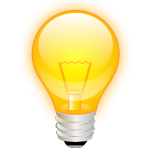**Historical Perspective on Creativity:**
– Etymology and historical roots of the term “creativity.”
– Views on creativity in ancient cultures like Greece, China, and India.
– Transition of creativity from divine inspiration to individual ability during the Renaissance.
– Development of discussions on creativity during the Age of Enlightenment and beyond.
**Theoretical Frameworks of Creativity:**
– Definitions of creativity by various authors and scholars.
– Theories like the four Ps (Process, Product, Person, Place) and the Four C Model.
– Notable contributors to the understanding of creativity.
– Process theories, convergent and divergent thinking, and the creative cognition approach.
**Models and Theories of Creativity:**
– Introduction of models like the Four C Model and the Explicit-Implicit Interaction (EII) Theory.
– Concepts such as conceptual blending, information intersection, and everyday imaginative thought.
– The dialectical theory of creativity and the neuroeconomic framework for creative cognition.
– Behaviorism theory of creativity and its components like problem recognition and idea generation.
**Creativity Assessment and Measurement:**
– Development of tests like Divergent Thinking (DT) tests and the Torrance Tests of Creative Thinking.
– Components of DT tests: Fluency, Flexibility, Originality, Elaboration.
– Automated scoring of DT tests using NLP techniques.
– The social-personality approach to creativity and the correlation of traits within the Big Five model.
**Application and Implications of Creativity:**
– Importance of creativity in various fields like education, innovation, and business.
– Applications of creativity in product development, planning, interdisciplinary research, and entrepreneurship.
– Implications of creativity in counseling, psychotherapy, and the optimization of utility-maximization problems.
– The role of brain network dynamics and personality traits in fostering creativity.
This article's lead section may be too short to adequately summarize the key points. (December 2019) |
Creativity is a characteristic of someone (or some process) that forms something novel and valuable. The created item may be intangible (such as an idea, a scientific theory, a musical composition, or a joke) or a physical object (such as an invention, a printed literary work, or a painting). Creativity enables people to solve problems in new or innovative ways.

Scholarly interest in creativity is found in a number of disciplines, primarily psychology, business studies, and cognitive science. However, it is also present in education, the humanities (including philosophy and the arts), theology, and the social sciences (such as sociology, linguistics, and economics), as well as engineering, technology, and mathematics. These disciplines cover the relations between creativity and general intelligence, personality type, mental and neural processes, mental health, and artificial intelligence; the potential for fostering creativity through education, training, leadership, and organizational practices; the factors that determine how creativity is evaluated and perceived; the application of creative resources to improve the effectiveness of teaching and learning; and the fostering of creativity for national economic benefit. According to Harvard Business School, it benefits business by encouraging innovation, boosting productivity, enabling adaptability, and fostering growth.